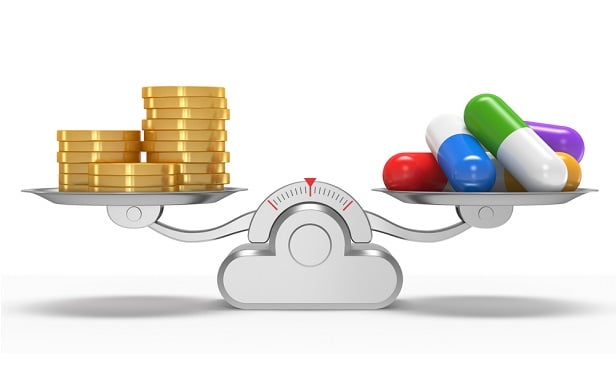 An increase in discounts offset the increase in list prices by an average of 62 percent, but not everyone is seeing the savings. (Image: Shutterstock)
An increase in discounts offset the increase in list prices by an average of 62 percent, but not everyone is seeing the savings. (Image: Shutterstock)
Drug prices are increasing, but what does that mean, exactly? Does that mean patients are paying more for their drugs, employers, insurers, or all of the above?
A recent analysis conducted by researchers at the University of Pittsburgh School of Pharmacy and published in JAMA honed in on the change in both list prices and net prices for some 600 drugs between 2007 and 2018. They found that list prices increased an average of 9.1 percent per year over that period, while net price increases were held to just half of that–4.5 percent per year.
Related: Employer groups band together to lobby against high drug prices
What that means is that while patients are paying more, they're being shielded from some of the increase in costs thanks to a combination of discounts, including manufacturer rebates and discounts, copay programs and 340B discounts.
Prior drug pricing research has often overlooked these discounts, leading to an incomplete picture of what's really happening with drug prices, the researchers assert. "The lack of discount data limits drug pricing policy discussions, particularly because pharmaceutical manufacturers have recently argued that, after accounting for rebates, net prices have increased at the rate of inflation," they note. "This is especially relevant in the current legislative environment, when changes to the pharmaceutical reimbursement structure for major public payers are discussed."
Over the 11-year period, discounts increased from 40 percent to 76 percent for Medicaid and from 23 percent to 51 percent for other payers. This increase in discounts was enough to offset the increase in list prices by an average of 62 percent. Importantly, note the researchers, these discounts do not necessarily lower the price equally across the board for all patients. "Private insurers, for example, do not benefit from Medicaid discounts," they write. "Through setting high list prices and negotiating with payers for rebates, pharmaceutical manufacturers have the ability to set different net prices for each insurer."
In addition, not all drug prices (net or list) saw the same increases. The analysis found that drugs for multiple sclerosis had the greatest increases in both list and net prices at 439 percent and 157 percent over the 11-year period, respectively. And insulin drugs, which have gotten their share of attention for seemingly massive price increases in recent years? Compared to some of the other drug categories, the increased 262 percent in list and 51 percent in net prices almost seem tame.
The researchers attribute much of the variation in list price increases to the availability of alternative drugs in each category. If there are a lot of competitors in a space, manufacturers are more likely to offer discounts to incent a payor to choose their product. Antineoplastic agents, for example, have few substitutes available, and thus both list and net prices increased in parallel. But for categories such as noninsulin diabetic agents, TNF inhibitors and insulins, the availability of discounts has increased at a greater rate.
"While the findings of this study demonstrate that rebates and discounts may have an important role in offsetting increases in list prices of drugs, discounting practices can have unintended, and unfavorable, consequences," the authors note.
The consequences will sound familiar to those in the health and benefits space. Among them, the impact on uninsured patients paying for drugs out of pocket or those with a high-deductible health plan. As noted earlier, discounts are not applied evenly across the board, nor are they always passed down to the consumer level. Thus, out-of-pocket payers will often be more vulnerable to the increases in list price and have a harder time affording their medications. In addition, discounting practices can often incent the use of a more expensive drug when a cheaper alternative would provide the same benefits.
These two issues have been raised frequently when discussing legislation in regard to drug prices and the role of pharmacy benefits managers. "The widening gap between list and net prices is increasingly discussed in policy-making and among researchers, but there have been little data to inform these discussions," the authors write. "Understanding changes in both list and net prices is important for making informed decisions about policies addressing prescription prices and answering policy-relevant research questions."
Read more:
© 2025 ALM Global, LLC, All Rights Reserved. Request academic re-use from www.copyright.com. All other uses, submit a request to [email protected]. For more information visit Asset & Logo Licensing.








